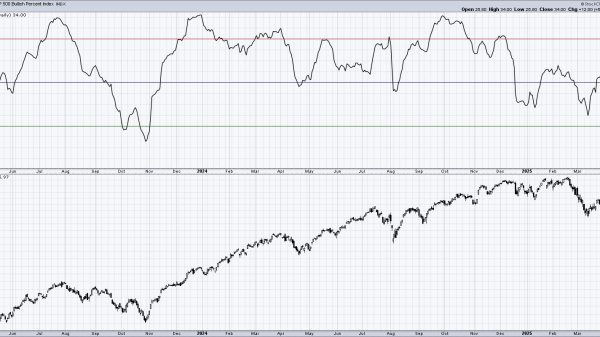Romina Boccia
Members of Congress say they want to be in the driver’s seat on correcting America’s rapidly deteriorating fiscal situation. Recent fiscal commission bills, such as the House Fiscal Commission Act [H.R. 5779] and its companion bill the Senate Fiscal Stability Act [S. 3262], require politicians to make up a majority of commission members and for Congress to vote on a final package. Previous bills, including the Sustainable Budget Act (H.R. 710) would only allow members of Congress to serve on a fiscal commission. There is a real risk that such a politically driven approach will fail (again).
What if members of Congress could have their fiscal commission and taxpayers could secure a fail‐safe mechanism in the event Congress’s plan went belly up? Enter what I call the “fail‐safe commission approach.”
Two Commissions Are Better Than One
Instead of relying entirely on one commission to come up with a plan to stabilize the debt, Congress could establish two fiscal commissions, working along parallel tracks, to increase the chances of a working proposal emerging from either or both.
One of the commissions would be a congressional commission, with members of Congress at the helm, guided by a competent staff and perhaps some outside experts. The other commission would be an independent commission, composed entirely of outside experts, guided by competent staff, and including perhaps some former members of Congress (who do not intend to run for re‐election again, ever).
The two commissions would work in parallel, coming up with their respective proposals for stabilizing the US public debt at no higher than the economic product of the country, or 100 percent of GDP, and ensuring the long‐term solvency of old‐age benefit programs: Medicare and Social Security.
Congress Gives it a Go
If the congressional commission succeeds in advancing a proposal that meets these goals, and Congress passes said proposal via expedited procedures in both the House and Senate, the congressional proposal would save the day. We should hope for such an outcome. It would be a relief to see Congress responsibly and sensibly address the growing US fiscal crisis by reforming politically popular and economically unsustainable old‐age benefit programs, guided by re‐establishing generational equity and securing a prosperous future for all Americans.
But we shouldn’t put all our eggs in this one basket. We can’t afford it.
A Fail‐Safe Mechanism
If the congressional committee failed, either in devising a working proposal or in passing it, the independent commission’s proposal could advance through silent approval. This means the independent proposal would become law if the president approved it and Congress did not pass a resolution of disapproval within 45 days.
As such, this fail‐safe congressional fiscal commission plan would establish both a congressional commission, with expedited voting procedures to smooth the path to adoption, and a BRAC‐like fiscal commission, modeled after the successful Base Realignment and Closure Commission, composed of independent experts whose proposal would be fast‐tracked to the president with silent approval by Congress.
This is not an entirely new concept. In a joint Brookings and Committee for a Responsible Federal Budget paper arguing for the creation of a long‐term budget for entitlements, Stuart Butler and Maya MacGuineas propose what they coin an “inside‐outside” approach. The “outside” part would establish an independent commission whose recommendations would be the default mechanism to set the long‐term budget for entitlements. The “inside” part would simultaneously set up a congressional super committee that could override the independent commission’s package and whose proposals would be eligible for an expedited vote.
As described by Butler and Timothy Higashi in a separate Brookings paper:
“In this way, the commission would, in effect, force the issue but the congressional leadership would not in practice concede the details to the commission.”
We Can’t Afford to Fail Again
Washington politicians have long known that current spending policies are unsustainable. Yet they’ve failed to act to avoid a debt crisis that’s now closer than ever. Previous commissions, relying primarily or exclusively on members of Congress to fix the debt, have failed. Even when they’ve succeeded in coming up with a plan, they haven’t been able to pass it in Congress (see Simpson‐Bowles).
Interest costs are rising. Treasury will need to refinance about one‐third of all publicly held debt in the next year, at now far higher rates. The large size of the US public debt, approaching $27 trillion entails higher interest costs as well. Additional borrowing to the tune of $2 trillion in 2023 further adds to the problem, crowding out other private sector investments and pushing up rates further. Americans can no longer afford to wait on Congress to step up to the challenge.
It’s time for a new approach. Pairing a congressional fiscal commission with an independent fiscal commission that’s modeled after BRAC will establish a fail‐safe approach. It will put additional pressure on Congress to do the right thing and bail us out should lawmakers fail us yet again.
Note: The House Budget Committee is holding a second hearing on the topic of a fiscal commission. The November 29 hearing is titled “Examining the Need for a Fiscal Commission: Reviewing H.R. 710, H.R. 5779, and S. 3262.” A previous hearing was held on October 19 and titled “Sounding the Alarm: Examining the Need for a Fiscal Commission.” I wrote about the latter here.
























